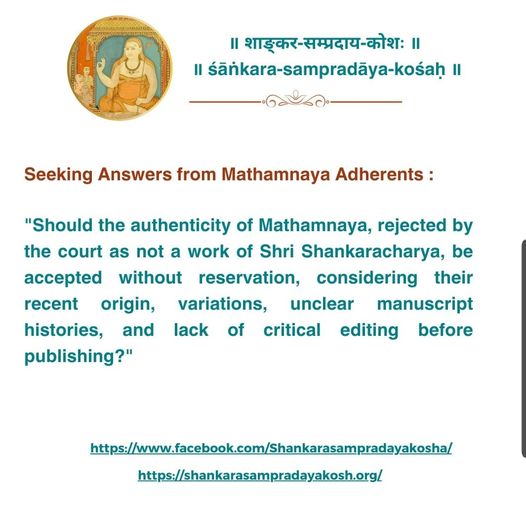Last Days of Adi Shankaracharya- A Perusal of various sources- 9: Jagadgururatnamala
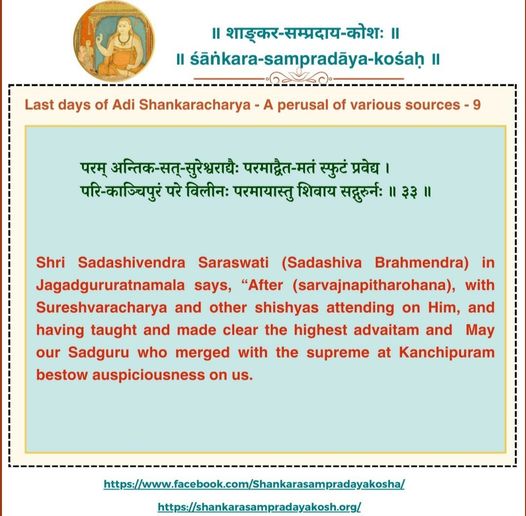
Last Days of Adi Shankaracharya- A Perusal of various sources- 9: Jagadgururatnamala

Last Days of Adi Shankaracharya- A Perusal of various sources- 8: Sringeri Guruvamsakavya and Madhaveeya Shankaravijaya stand apart from one another.
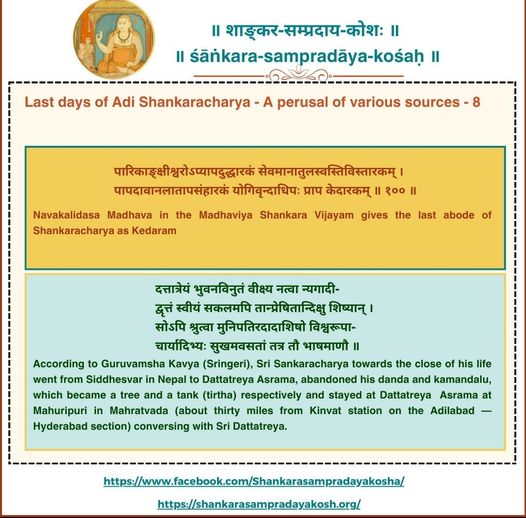
Last Days of Adi Shankaracharya- A Perusal of various sources- 7: Markandeya Samhita
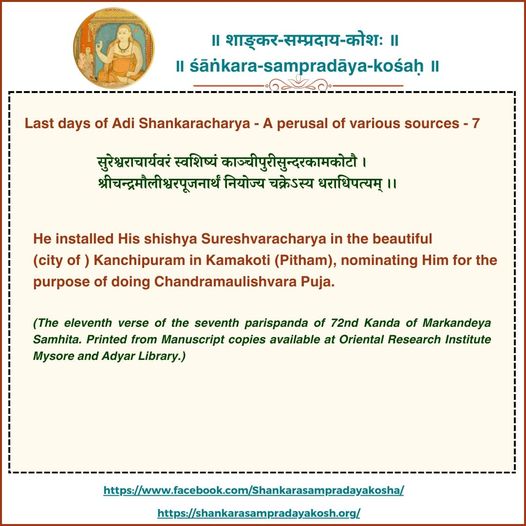
Last Days of Adi Shankaracharya- A Perusal of various sources- 6 : Ramabhadra Dikshita’s Patanjali Charitam And Shankarabhyudayam of Rajachudamani Dikshita , the disciples of Nilakanta Dikshita (Palamadai).
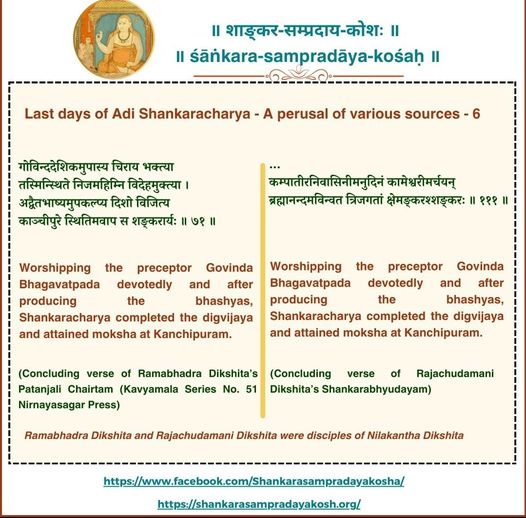
Last Days of Adi Shankaracharya- A Perusal of various sources- 5 : Madhaviya Shankaravijayam, Advaitarajyalakshmi commentary (Verse 103 of Sarga 16)
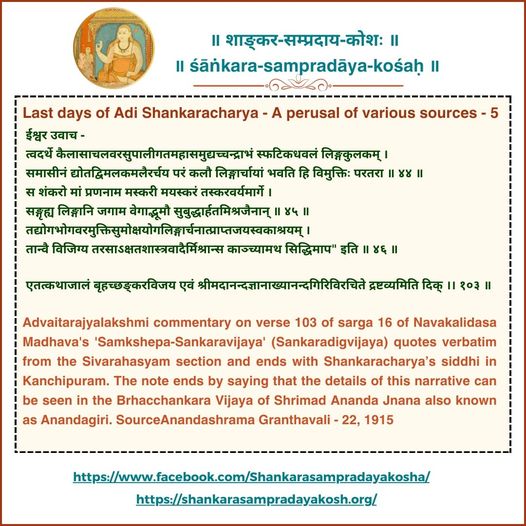
Last Days of Adi Shankaracharya- A Perusal of various sources- 4 : GuruParampara namamala of Dakshinamnaya Sringeri (Kudali) matha, Shimoga Dist. Karnataka.
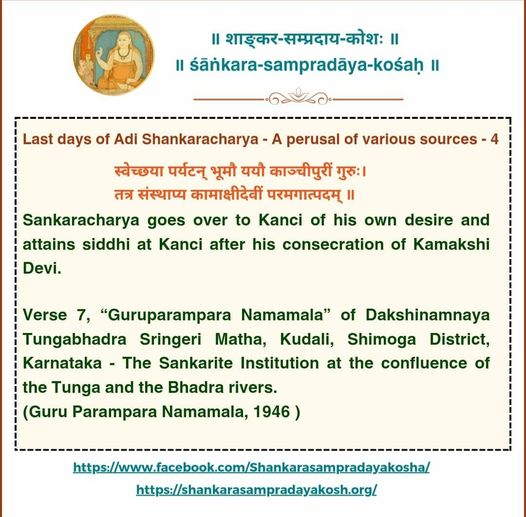
Last Days of Adi Shankaracharya- A Perusal of various sources- 2 & 3 : Sivarahasya – Sringeri Pandit’s translation into Kannada.

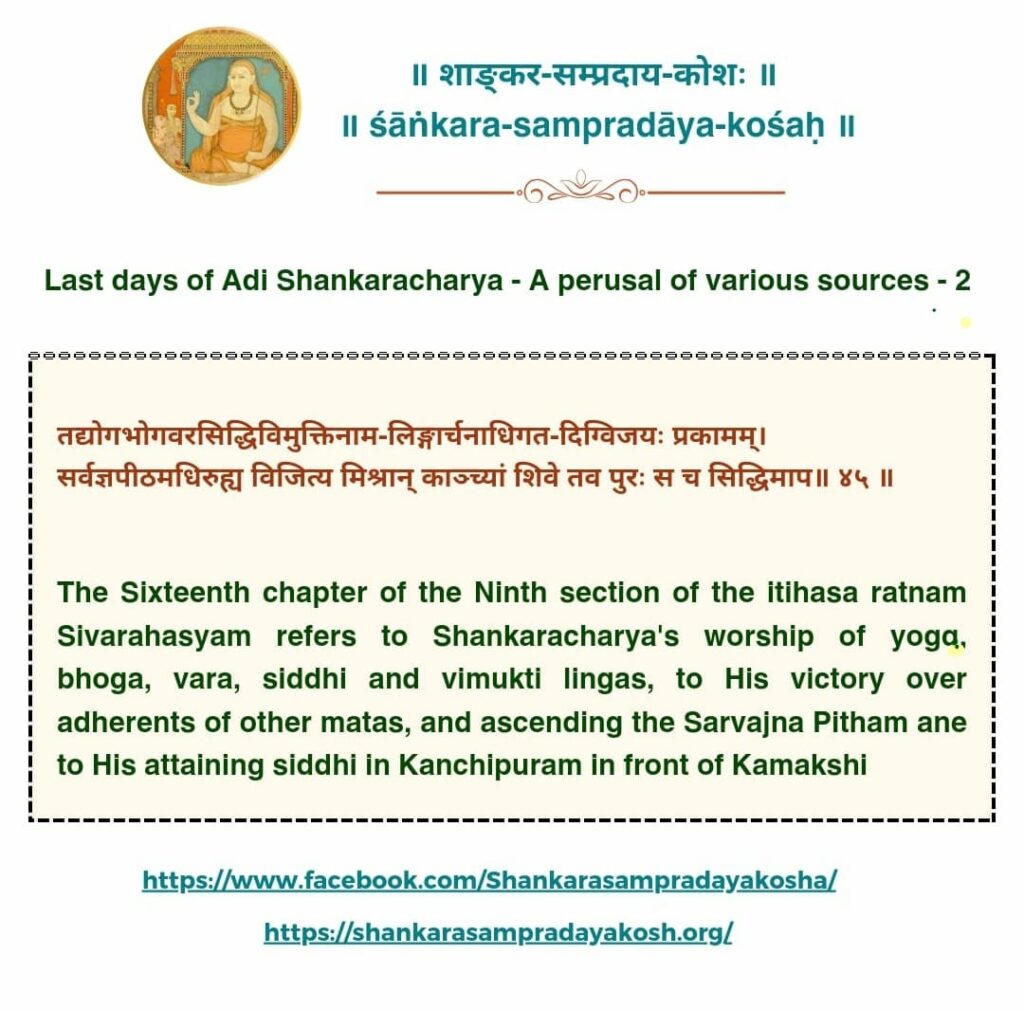
Last Days of Adi Shankaracharya- A Perusal of various sources-1 : Anandagiriya Shankaravijayam – 74th Prakaranam.
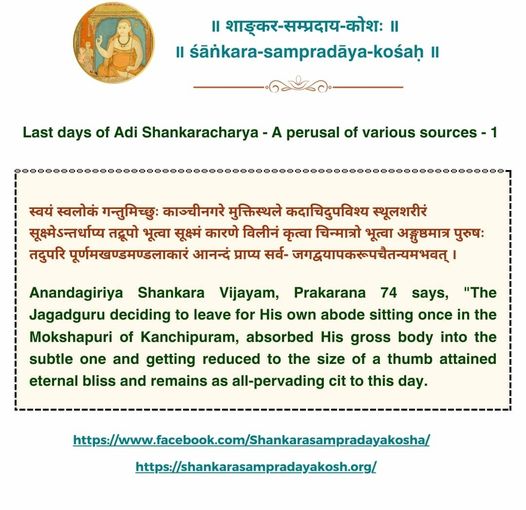
1. What is a śākhāmaṭham?
2. Is there any pramāna/supporting evidence or historical documentation for the use of this term?
3. How is it determined that a specific maṭham qualifies as a “śākhāmaṭham,”and who makes this determination?
4. Has the spurious claim about “śākhāmaṭham” been rejected by various courts in the last two centuries?
5. Would making repeated claims against other ancient religious institutions (maṭhams) in a similar manner be considered contempt of court?
“Should the authenticity of Mathamnaya, rejected by the court as not a work of Shri Shankaracharya, be accepted without reservation, considering their recent origin, variations, unclear manuscript histories, and lack of critical editing before publishing?”
